

|

|
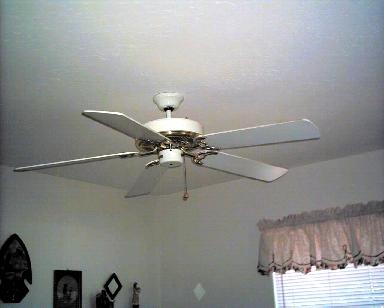
|

|
| Unless the problem is obvious, I recommend just replacing a fan that has problems with a new one. The repair that seems to work most consistently is a good all around tightening. From my experience, if it needs to be taken apart or taken down, you are better off to get a new fan. | If an inexpensive fan is desired, there are many styles and colors to choose from. I would recommend that you not spend less than $50. Cheap fans are noisy and wobble. $50ish fans are for someone who needs to buy a fan. | You may desire a more decorative look and/or lights. These will add some to the price. I would say that in most cases, you should expect to pay no more than $120 to $150 unless you are looking for something very special. The fan pictured here cost $200. |
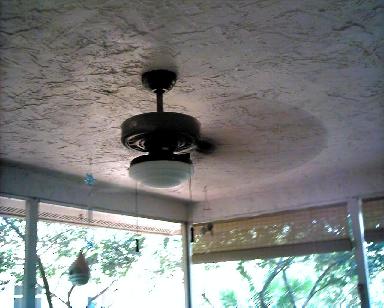
|
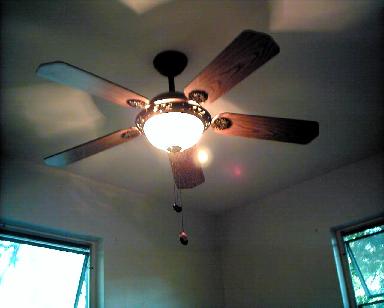
|
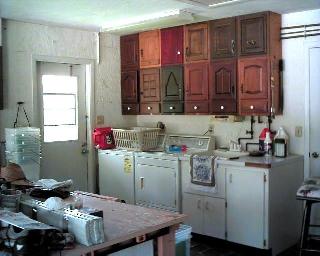
|
| Get a fan specifically made for outdoor use if the fan is going to be outside the climate controlled area of the house. This will add a bit to the cost of a base model fan, but indoor fans will not last outdoors. The $120-$150 cap would still apply. | Generally, most fan installations involve the swapping of one fan for another. The charge to swap one fan for another, with no major modifications, is $40. Rarely, although not unheard of, some extra work may be required to make an existing unsafe installation safe. | Wouldn't a ceiling fan be nice to have in your garage? A new installation to put a fan where no fan exists generally would run between $125 and $225 and depends on the amount of work required to pull a wire to the fan location and whether or not a switch for the fan is needed or wanted on the wall. |
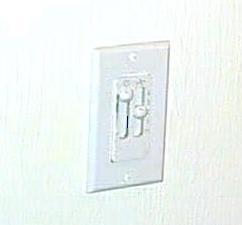
|

|
| If a wall switch controls the fan, there are wall switches that can control the fan speed (you must get a fan speed control, a dimmer switch will not work!). I find these very desireable and use them in my own house. Sometimes a third wire has been added and the fan and light can be controlled separately. I use the switch above which is a little more expensive ($25+), but I like the way it looks and works. | Some of the newer homes have vaulted or ceilings that are higher than a standard ceiling. In this case, an extended downrod is usually added so that the fan will be positioned between 7 and 8 feet above the floor. This will improve the circulation and also make the fan part of the room decor. In some cases the ceiling is lower than standard and could be dangerous. In these cases, one should look for a flush mount fan. In no case should a fan be mounted lower than seven feet above the floor! |